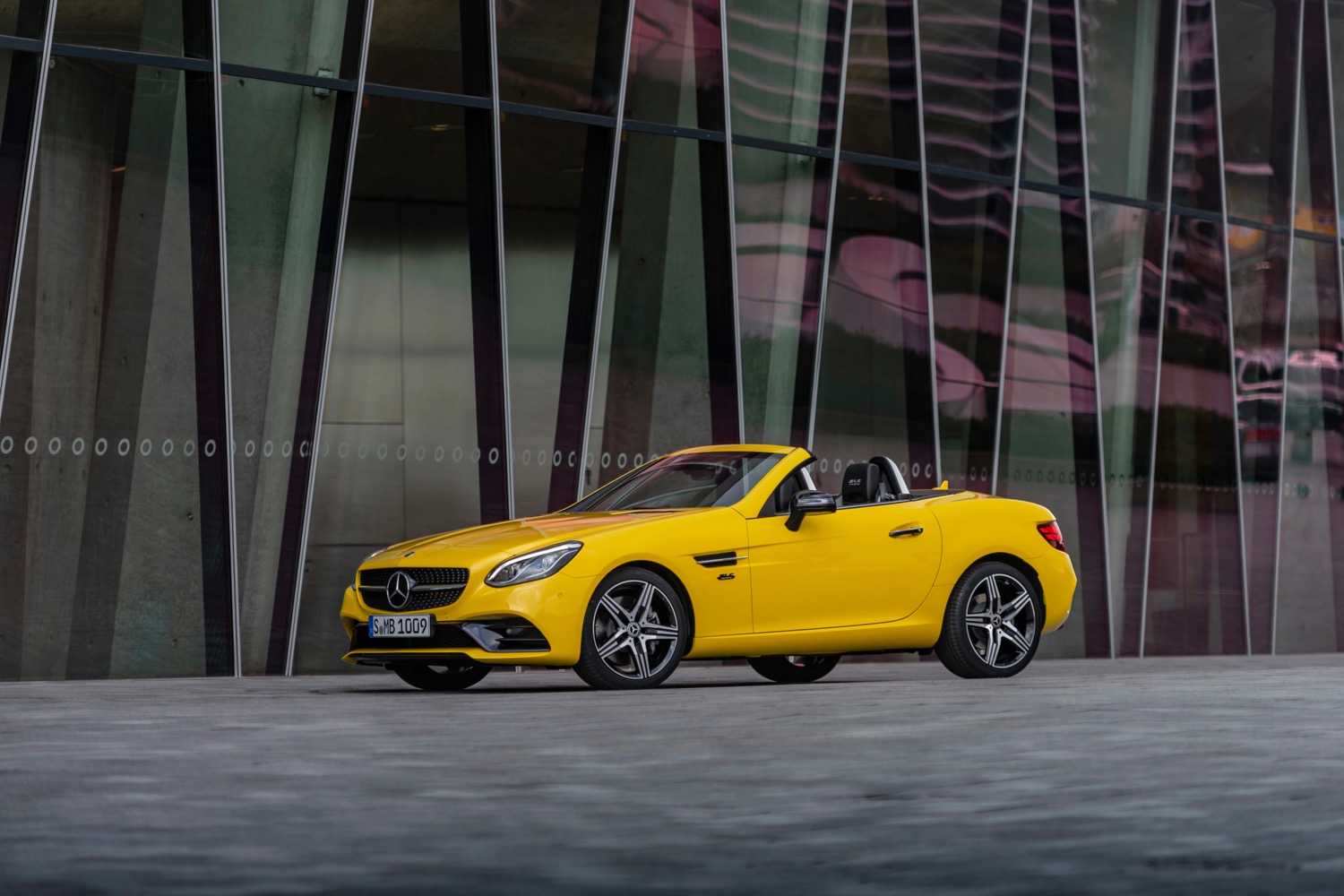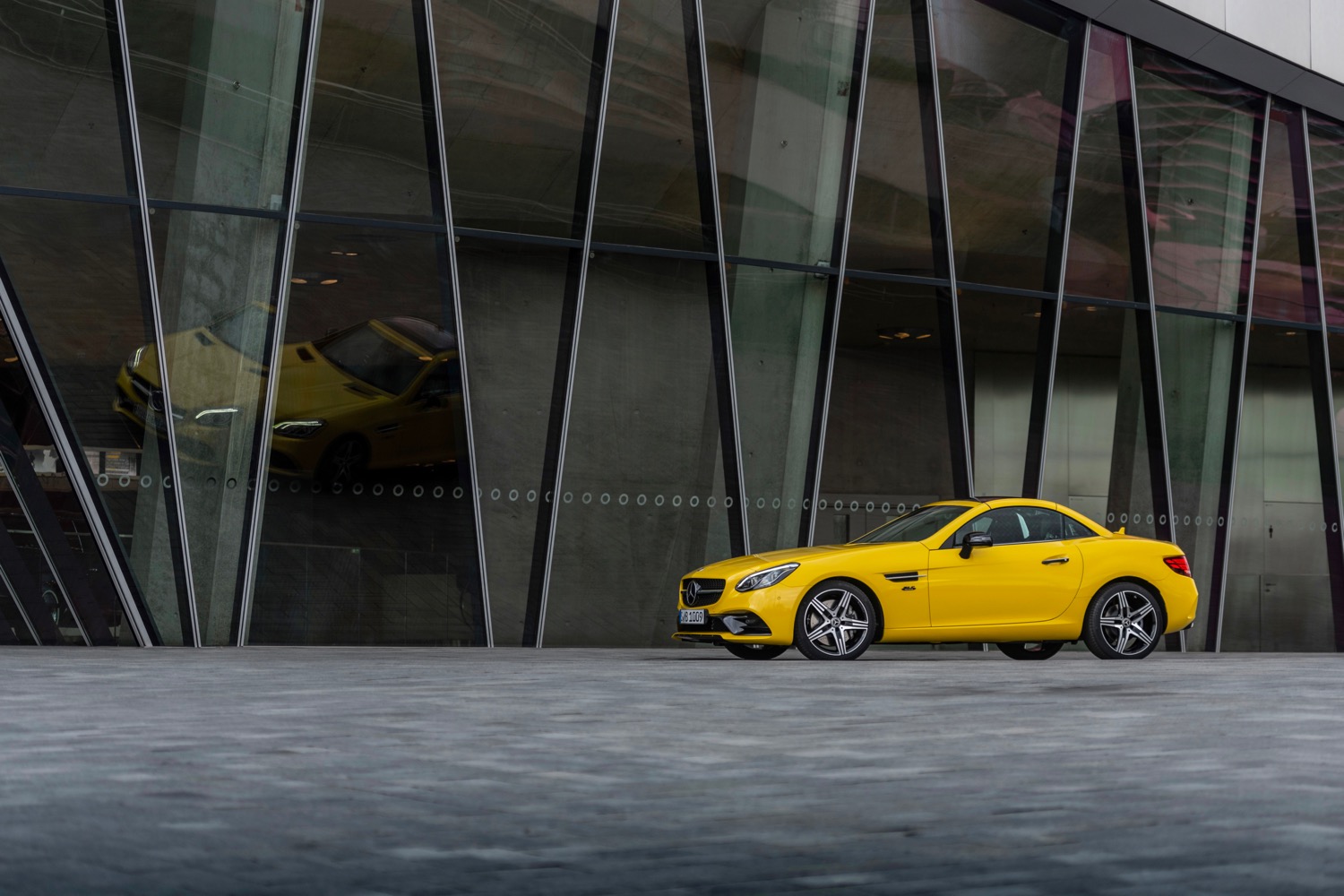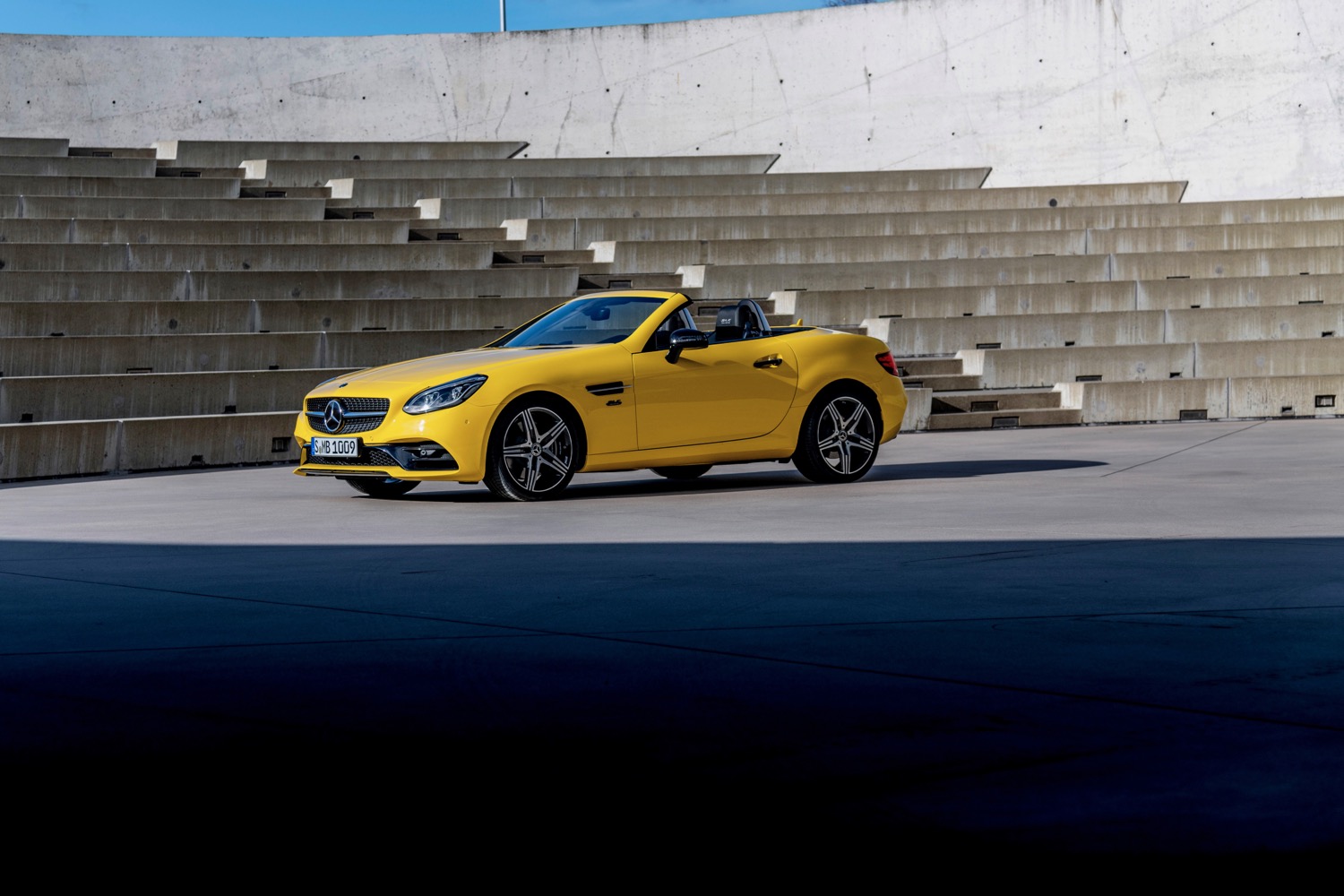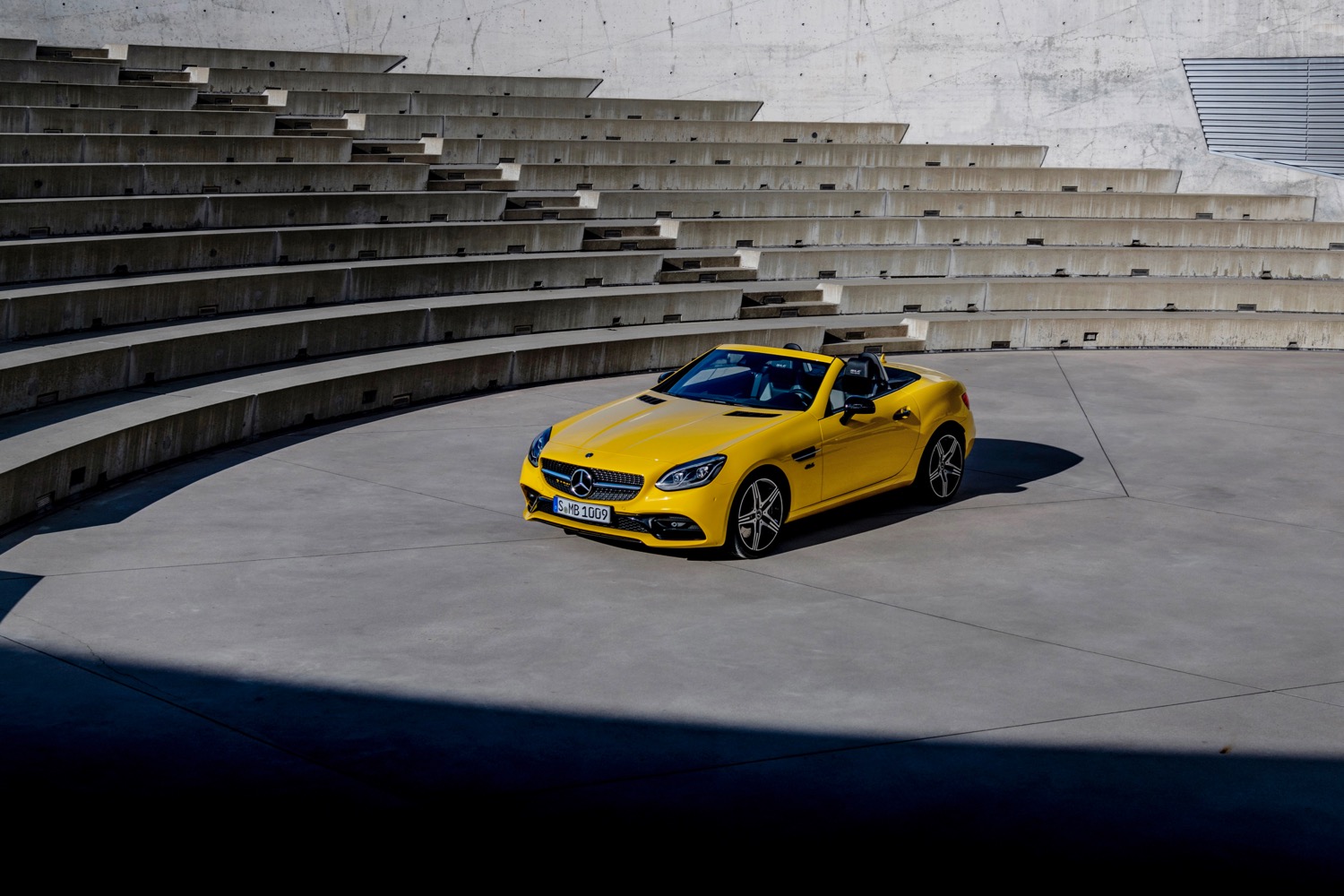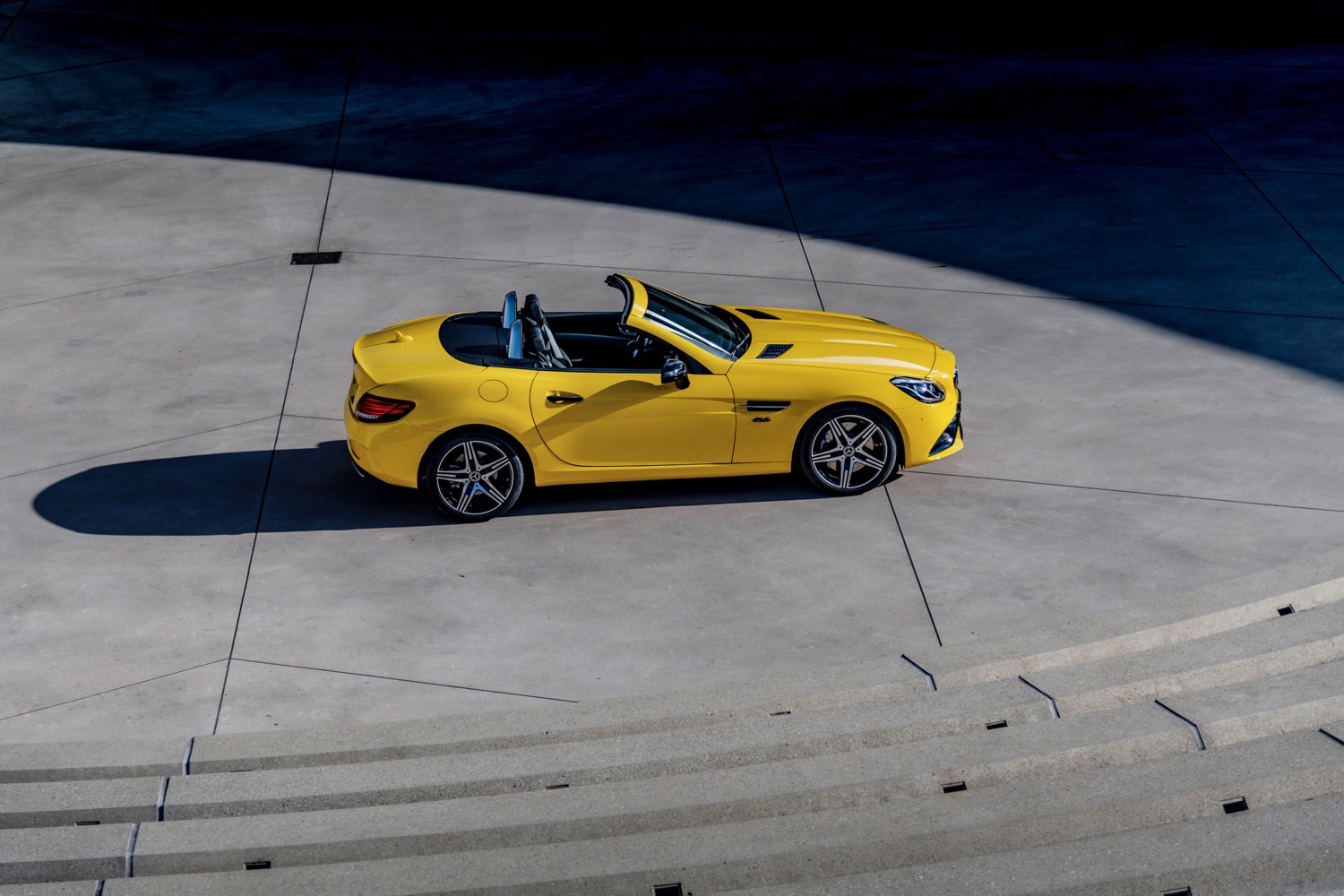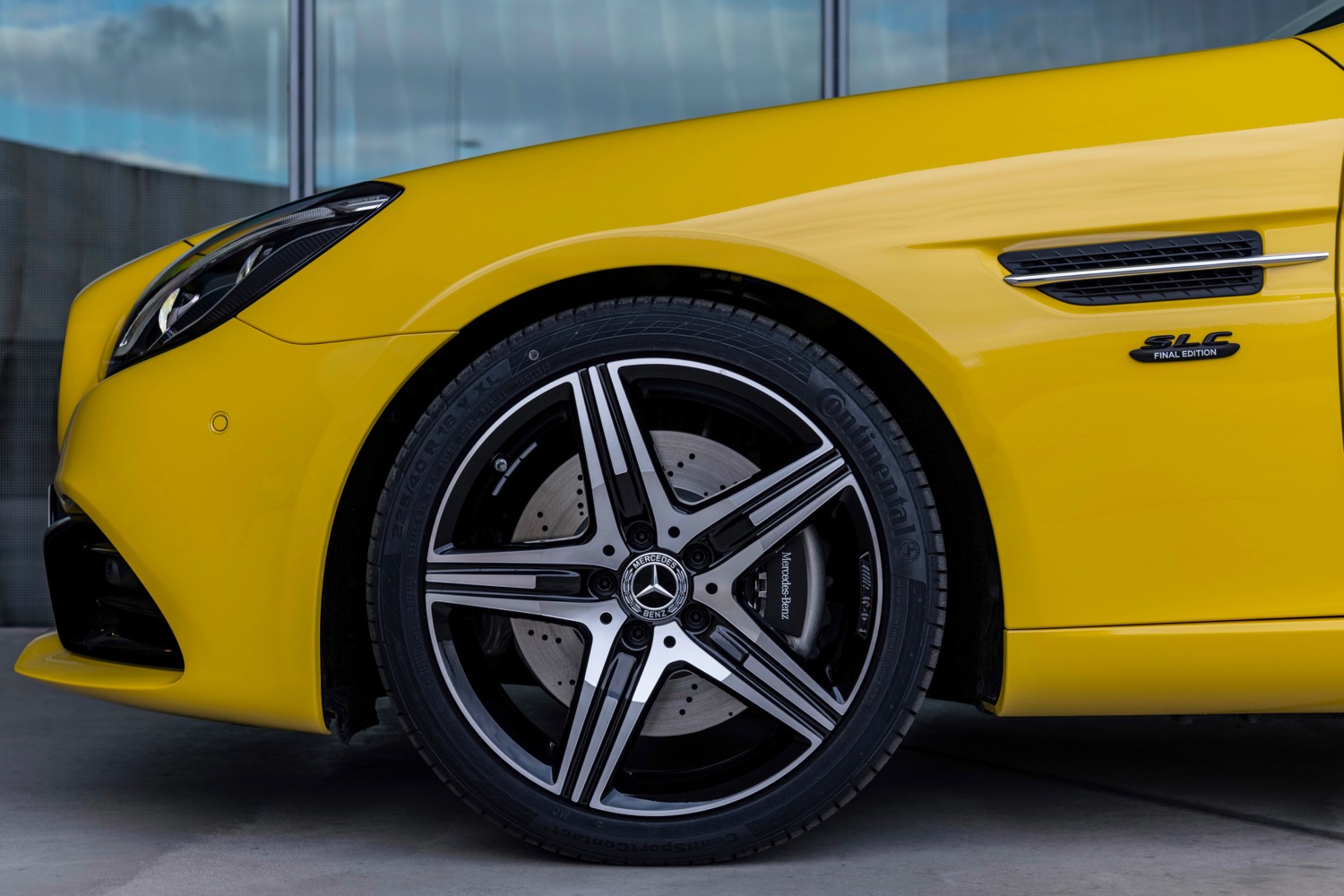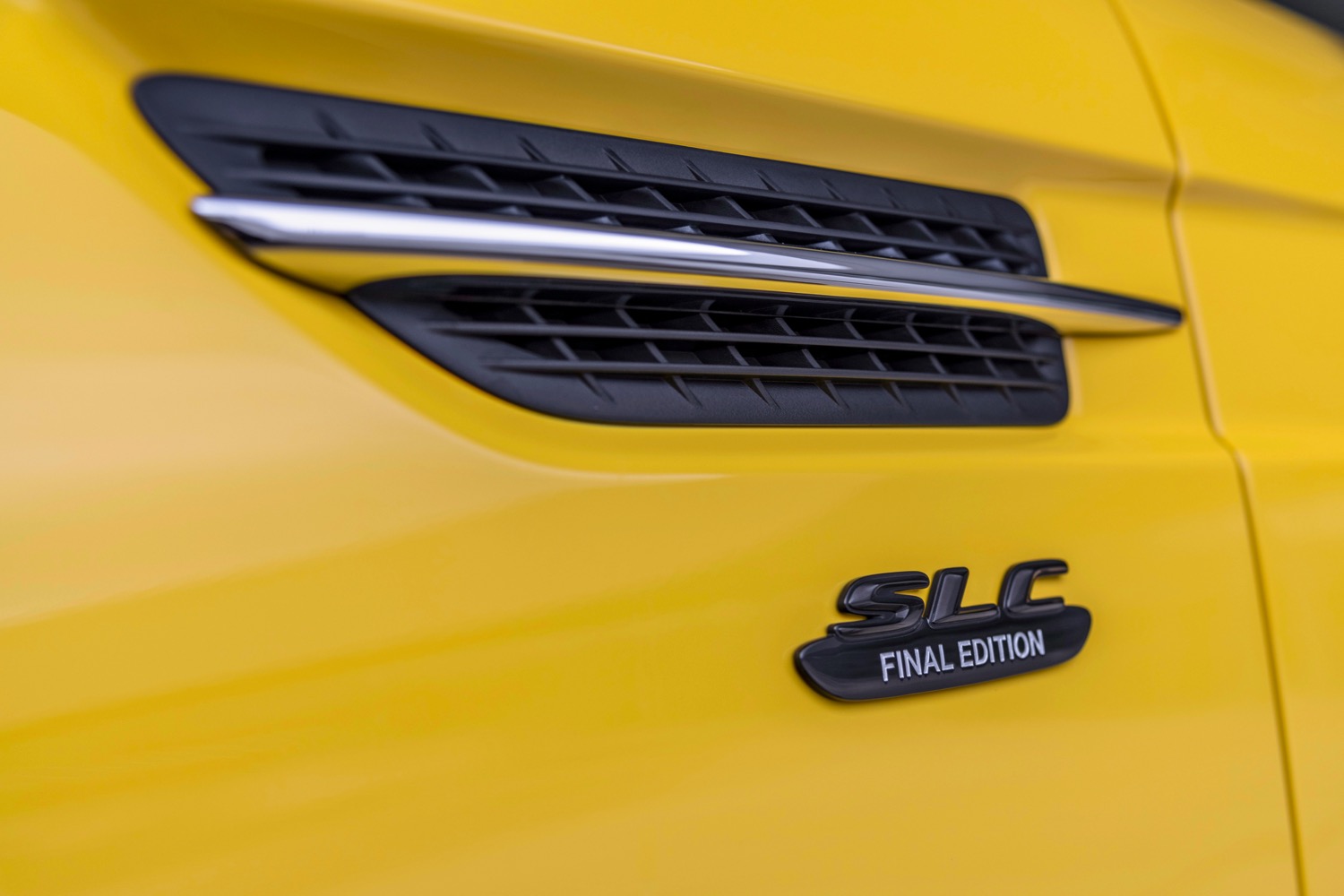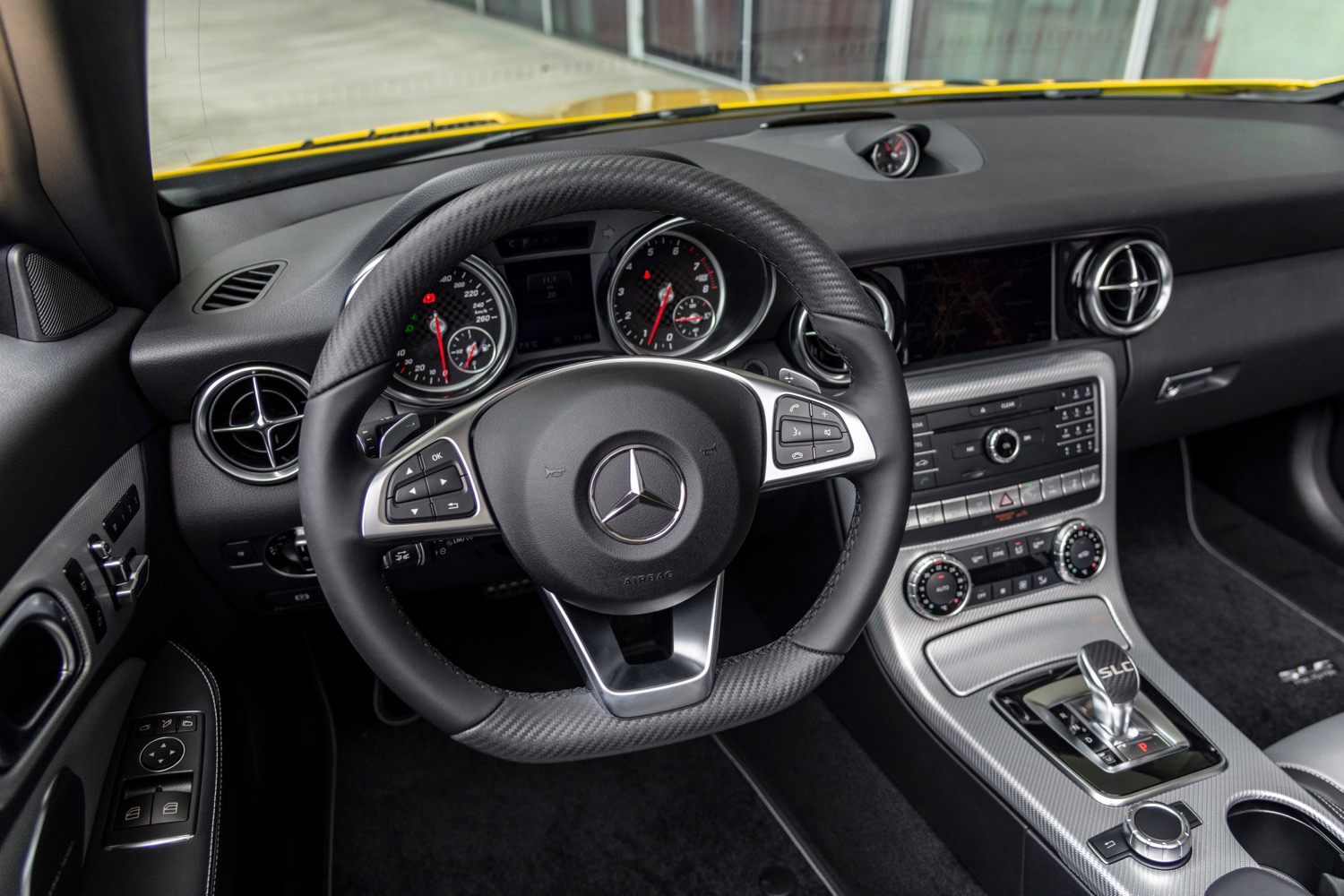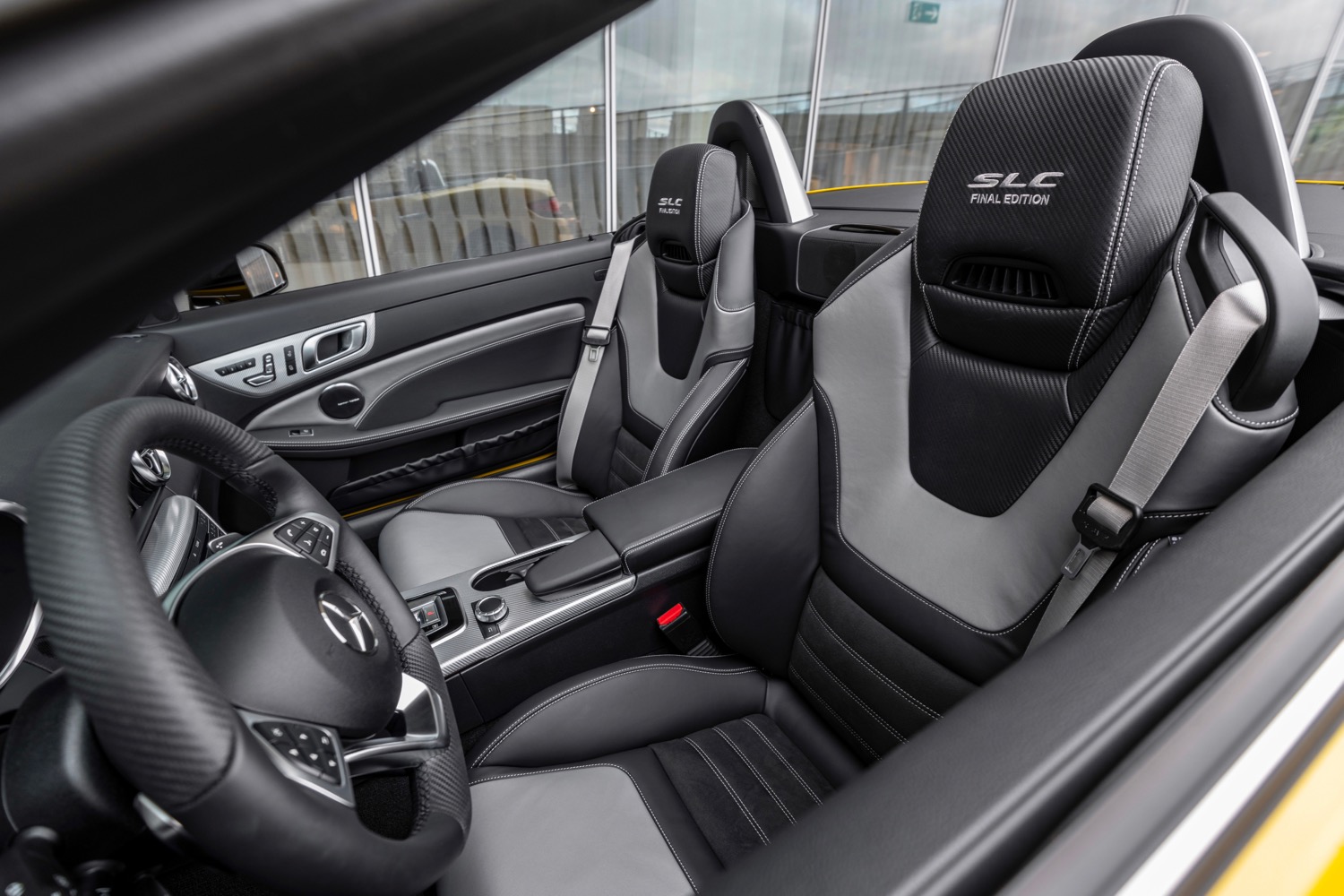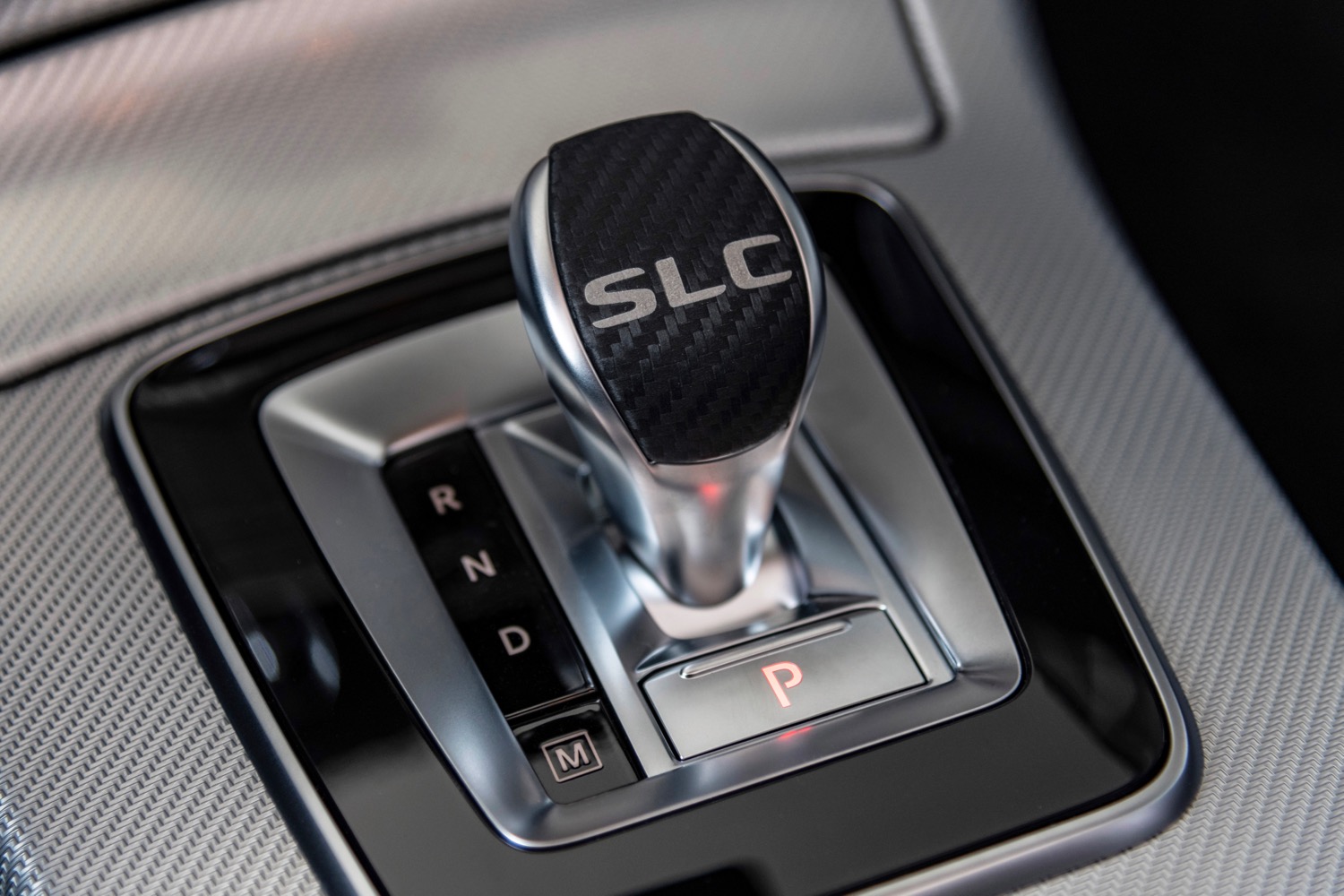The Mercedes-Benz SLC sports car is no more. The SLC, which launched in 1996 as the SLK and has remained in production through three generations, will bow out as a 2020 model. To commemorate the occasion, Mercedes is launching a Final Edition model that will arrive in United States showrooms next year.
The Final Edition treatment will be applied to both versions of the SLC: The base SLC300, and the sportier Mercedes-AMG SLC43. Both versions get special trim elements, 18-inch wheels, and model-specific paint colors of Selenite Gray and bright Sun Yellow. If Mercedes made the latter color more widely available, maybe it wouldn’t have to discontinue the car.
Mercedes did not mention any mechanical changes. The SLC300 uses a 2.0-liter, turbocharged four-cylinder engine, producing 241 horsepower and 273 pound-feet of torque. The AMG SLC43 has a 3.0-liter twin-turbocharged V6, good for 385 hp and 384 lb-ft. Both versions use a nine-speed automatic transmission with rear-wheel drive. Zero-to-60 mph times are 5.8 seconds for the SLC300, and 4.6 seconds for the AMG SLC43, according to Mercedes. The top speed of both versions is 155 mph.
The SLC’s lineage dates back over 20 years. The success of the Mazda Miata led to a boom in small roadsters in the 1990s. Aiming to capitalize on that trend, Mercedes launched the SLK in 1996, complete with a retractable hardtop that offered the convenience and security of a coupe with the fun of a convertible.
However, as the car’s popularity dwindled, Mercedes let it wither on the vine. The current generation, code-named R172, dates back to 2011. That makes it pretty old by industry standards. Granted, Mercedes did introduce some updates in 2016, along with a name change from SLK to SLC to conform with the automaker’s new naming scheme.
Mercedes’ German rivals have had more success with their small sports cars. The BMW Z4, which once looked like it was not long for this world, was recently redesigned and twinned with the Toyota Supra. The Audi TT is celebrating its 20th anniversary. The current-generation TT introduced Audi’s Virtual Cockpit digital display, proving that the TT is still a vital part of the automaker’s lineup.
The 2020 Mercedes-Benz SLC Final Edition arrives in U.S. showrooms next year. Pricing will be announced closer to the on-sale date.
Editors' Recommendations
- 2025 Mercedes-Benz EQS sedan gets new face, bigger battery
- 2024 Mercedes-AMG S63 E Performance first drive review: high-performance plug-in
- Mercedes-Maybach EQS SUV is old-school luxury — electrified
- Mercedes is finally bringing an electric van to the U.S.
- 2023 Mercedes-Benz EQE SUV preview: The EV lineup grows again
